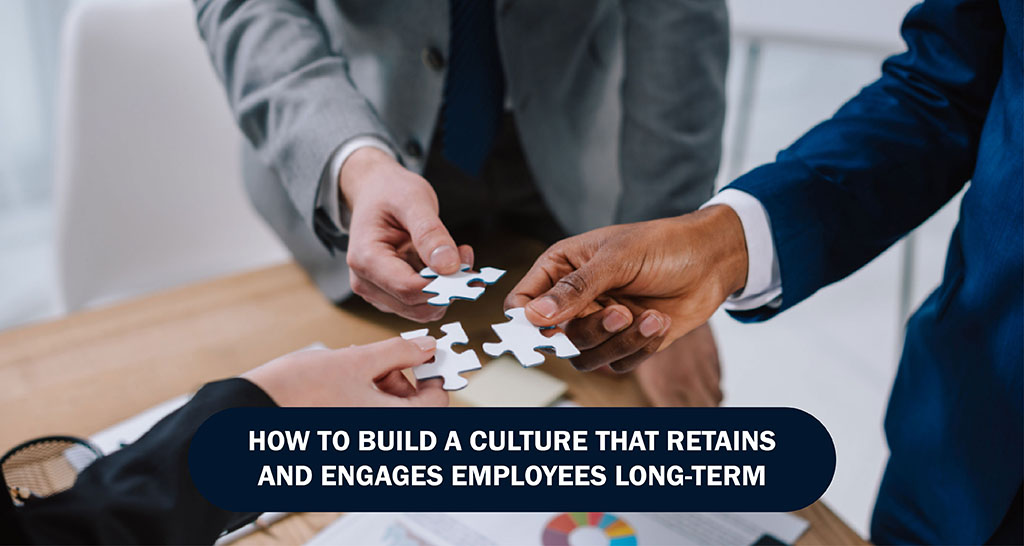In the current competitive employment landscape, the challenge of attracting high-caliber talent is merely one aspect of the broader issue. The real indicator of an organization’s success lies in its ability to retain and engage employees over the long term. High employee turnover can incur significant costs, resulting in decreased productivity, increased recruitment expenses, and lowered morale. To address these challenges, organizations must prioritize the development of a positive workplace culture that promotes long-term commitment, employee satisfaction, and active engagement.
Key strategies for cultivating a culture that not only draws in exceptional talent but also ensures that employees remain motivated, engaged, and committed over time are outlined below.
- Foster Open Communication and Transparency
Effective and transparent communication serves as the foundation of a robust organizational culture. It is essential for employees to feel informed, valued, and acknowledged to maintain their engagement and dedication to their roles. Conversely, when employees are not kept apprised of decisions or changes within the organization, it may result in frustration and a decline in commitment.
To build transparency:
Frequently communicate company goals and performance: It is essential to keep employees informed about business performance, strategic initiatives, and the impact of their contributions on broader objectives. This can be achieved through various channels such as company-wide meetings, newsletters, or internal communication platforms.
Encourage feedback: Establish channels that enable employees to communicate their ideas, voice their concerns, and propose enhancements. This may be accomplished through surveys, individual meetings, or casual team conversations. The essential aspect is to engage in active listening and demonstrate that employee feedback is appreciated and taken into consideration.
- Create a Sense of Belonging and Purpose
Employees are more inclined to remain with an organization over the long term when they experience a profound sense of purpose and alignment with the company’s mission and values. They seek assurance that their contributions are meaningful and play a role in achieving broader objectives. Cultivating a sense of belonging is crucial for fostering loyalty and engagement, thereby necessitating the establishment of an environment in which employees feel valued and connected.
To build a sense of belonging:
Emphasize the company’s mission and values: Highlight the organization’s mission and core values the values of your company mustn’t be merely articulated but actively practiced on a daily basis. Demonstrate how these values influence decision-making processes and contribute to the overall culture of the organization.
Invest in employee development: Provide development opportunities that correspond with employees’ career aspirations. When individuals perceive that they are advancing both personally and professionally, they are more inclined to remain with the organization.
- 3. Invest in Employee Well-being
Employee well-being has evolved from being a mere benefit to a fundamental component of a successful organizational culture. Prioritizing the physical, mental, and emotional health of employees not only boosts engagement but also mitigates burnout and decreases turnover rates.
To support employee well-being:
Facilitate mental health assistance: Make available resources like employee assistance programs (EAPs), counseling services, or designated mental health days to aid employees in coping with stress and mitigating the risk of burnout.
Promote work-life balance: Foster a workplace culture that supports employees in taking time off and disengaging from work responsibilities. This approach aids in preventing burnout and sustains long-term productivity and job satisfaction.
- Recognize and Reward Contributions
Employees who perceive that their efforts are valued tend to exhibit higher levels of engagement and loyalty. Consistent acknowledgment of achievements not only reinforces desirable behaviors but also enhances overall morale and elevates motivation. Recognizing contributions can vary from simple acts of appreciation to structured recognition initiatives.
To recognize and reward employees:
Establish consistent recognition practices: This may involve acknowledging achievements during team meetings, featuring commendations in newsletters, or providing informal recognition through individual discussions.
Provide concrete incentives: Financial bonuses, gift cards, extra vacation days, or other forms of rewards can encourage employees to maintain high-performance levels. Whenever feasible, customize these incentives to align with individual preferences.
- Promote Collaboration and Teamwork
A constructive workplace environment flourishes through collaboration, enabling employees to perceive themselves as integral members of a unified team striving towards common goals. This spirit of camaraderie and teamwork not only elevates job satisfaction but also fosters innovation and enhances overall productivity.
To promote collaboration:
Organize team-building initiatives: Consistently arrange team-building events, social functions, or retreats. Such activities can dismantle obstacles, enhance relationships, and foster a greater sense of connection among employees.
Encourage independence among teams: Enable employees to exercise their autonomy in decision-making and assume responsibility for their projects. This approach not only enhances engagement but also fosters the development of problem-solving and leadership abilities.
- Provide Opportunities for Growth and Learning
Employees who perceive that they are consistently acquiring new skills and advancing in their professional development are more inclined to remain engaged and committed to the organization. A workplace culture that emphasizes ongoing improvement fosters a sense of value among employees, motivating them to deliver their highest quality of work.
To foster growth:
Provide educational and professional development initiatives: This may encompass practical training, mentorship opportunities, access to digital courses, or chances to participate in conferences and workshops.
Promote skill enhancement: Assist employees in acquiring skills that are advantageous for their present positions while also equipping them for prospective leadership roles.
Conclusion
Establishing a culture that effectively retains and engages employees over the long term necessitates deliberate actions, a dedication to promoting employee well-being, and the creation of an environment that fosters growth, collaboration, and acknowledgment. By encouraging open communication, aligning employees with a common mission, offering avenues for personal and professional advancement, and leading with empathy and transparency, organizations can develop a vibrant workplace culture that ensures employees remain satisfied, engaged, and loyal for many years. A constructive culture transcends mere retention; it is fundamentally about enabling employees to flourish and deliver their highest quality work, thereby contributing to the overall success of the organization.
